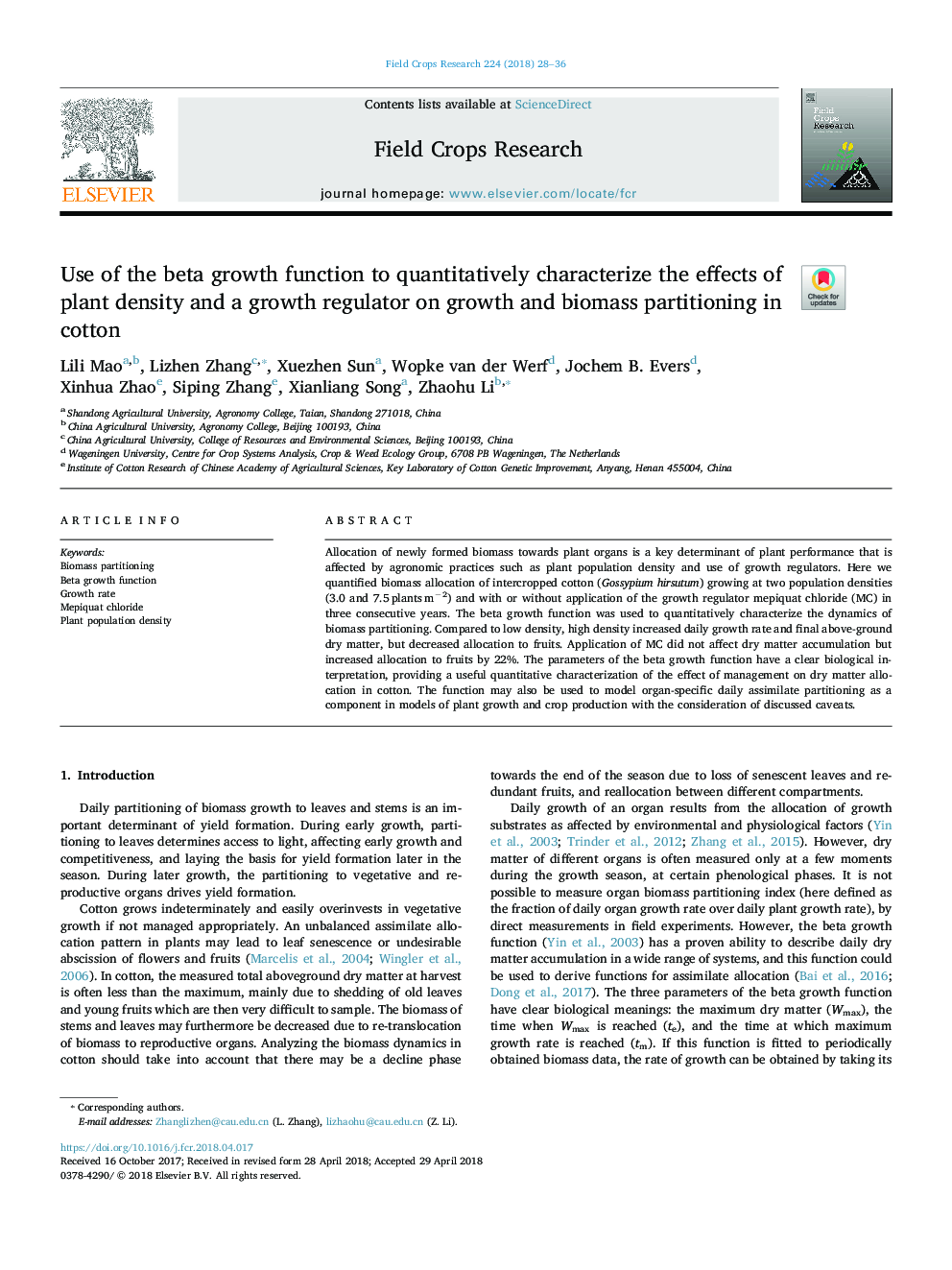| Article ID | Journal | Published Year | Pages | File Type |
|---|---|---|---|---|
| 8879111 | Field Crops Research | 2018 | 9 Pages |
Abstract
Allocation of newly formed biomass towards plant organs is a key determinant of plant performance that is affected by agronomic practices such as plant population density and use of growth regulators. Here we quantified biomass allocation of intercropped cotton (Gossypium hirsutum) growing at two population densities (3.0 and 7.5â¯plantsâ¯mâ2) and with or without application of the growth regulator mepiquat chloride (MC) in three consecutive years. The beta growth function was used to quantitatively characterize the dynamics of biomass partitioning. Compared to low density, high density increased daily growth rate and final above-ground dry matter, but decreased allocation to fruits. Application of MC did not affect dry matter accumulation but increased allocation to fruits by 22%. The parameters of the beta growth function have a clear biological interpretation, providing a useful quantitative characterization of the effect of management on dry matter allocation in cotton. The function may also be used to model organ-specific daily assimilate partitioning as a component in models of plant growth and crop production with the consideration of discussed caveats.
Related Topics
Life Sciences
Agricultural and Biological Sciences
Agronomy and Crop Science
Authors
Lili Mao, Lizhen Zhang, Xuezhen Sun, Wopke van der Werf, Jochem B. Evers, Xinhua Zhao, Siping Zhang, Xianliang Song, Zhaohu Li,
